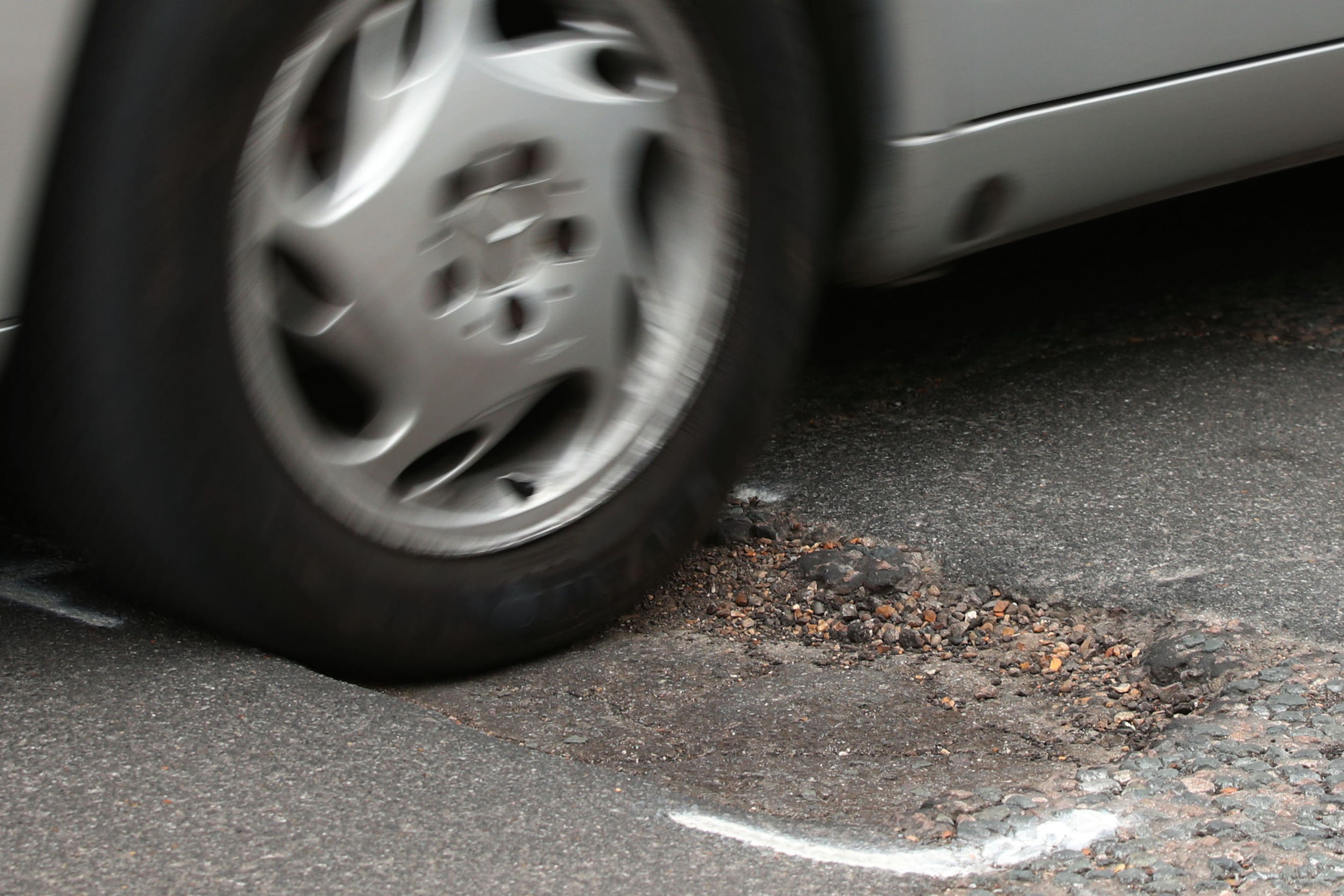New figures ‘confirm worst fears’ about state of roads in England
Just 1,123 miles of roads were surfaced in the 2021/22 financial year, according to RAC analysis of Government data

Resurfacing and treating of England’s local roads has fallen to a four-year low, new figures show.
Just 1,123 miles of roads were surfaced in the 2021/22 financial year, according to RAC analysis of government data.
That was down 29% compared with four years earlier when the total was 1,588.
The reduction was even sharper for surface dressing, which is a much cheaper technique that helps prevent the need for full resurfacing.
This was carried out on 3,551 miles of roads in 2021/22, a 34% drop from 5,345 in 2017/18.
Of the 153 roads authorities included in the latest data, 31% did no resurfacing while 51% failed to carry out any surface dressing.
The RAC said the figures demonstrate the need for the government to change the way it funds the maintenance of local roads.
It wants a proportion of the money raised through fuel duty to be ringfenced to give councils certainty over long-term funding.
RAC head of policy Simon Williams said: “These figures paint an incredibly stark picture of road maintenance in England and confirm our worst fears about the overall decline in the state of the country’s roads.
“While the Government has made more money available to authorities to fill potholes, it’s the general reduction in road improvement work that’s causing potholes to appear in the first place.
“It’s abundantly clear that councils in so many areas are barely scratching the surface when it comes to getting their roads up to a reasonable standard, and indeed the fact that such a large proportion haven’t done any surface dressing or resurfacing at all over a 12-month period really does say it all.
“Resurfacing is expensive but for some roads this will be the only course of action as they have fallen into such bad condition that nothing else can save them.
“Having said that, we urge authorities to make greater use of surface dressing and other preventative treatments which can be used successfully to improve surfaces and extend the lives of roads.”
Shaun Davies, who chairs the Local Government Association, said: “Decades of reductions in funding from central Government to local road repair budgets has left councils facing the biggest ever local roads repair backlog.
“This has been compounded by recent extreme weather as well as rising inflation, pushing up the cost of materials such as bitumen.
It’s the general reduction in road improvement work that’s causing potholes to appear
“In order to support motorists, the Government should take this opportunity to work with councils to develop a long-term, fully-funded programme to bring our roads up to scratch.”
A Department for Transport spokeswoman said: “It’s for local authorities to maintain their highways, and to help them do that we’re investing more than £5 billion from 2020 to 2025, with an extra £200 million announced at the Budget in March, to resurface roads up and down the country.
“We’ve also brought in new rules to clamp down on utility companies leaving potholes behind after carrying out street works.”
The cost of bringing pothole-plagued local roads in England and Wales up to scratch has been estimated at £14 billion.
The Government increased its Potholes Fund, which provides money to councils in England to tackle the issue – by £200 million to £700 million for the current financial year.
Paul Boss, chief executive of industry body the Road Surface Treatments Association, said: “Proactive surface treatment maintenance programmes, backed up by a risk-based approach to resurfacing the worst roads, have been proven to keep roads in better condition for longer, and that’s why private road operators use them.
“Vitally, they help to prevent damage caused by the freeze-thaw cycle where water gets into defects in surfaces, freezes and expands, causing cracks and potholes.
“Surface dressing, which is the most well-known treatment, maximises life expectancy by making roads last three to four times longer than without the preventative treatment, and with very little carbon generation.”
Subscribe to Independent Premium to bookmark this article
Want to bookmark your favourite articles and stories to read or reference later? Start your Independent Premium subscription today.
